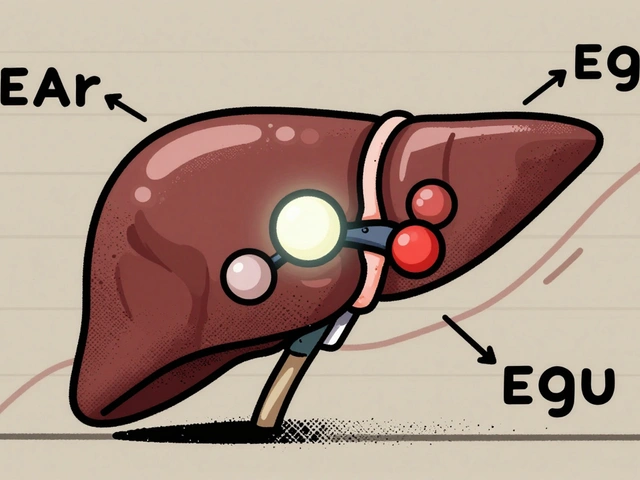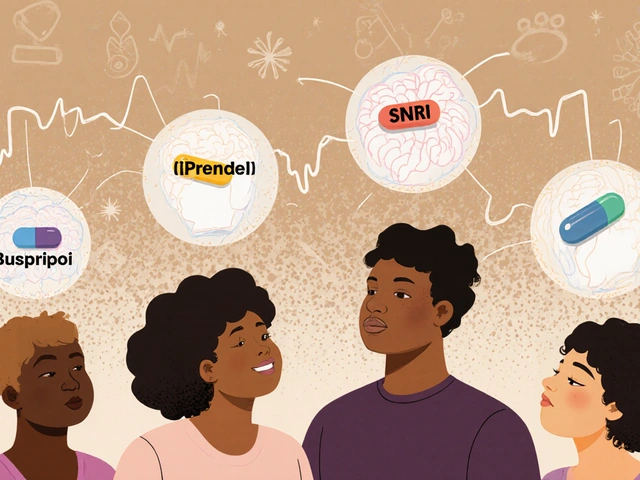Vortioxetine (Trintellix): What to Expect and How to Use It
Vortioxetine is an antidepressant often sold as Trintellix. People pick it for major depressive disorder because it works on serotonin in a few ways—blocking reuptake and nudging different serotonin receptors. That mix can help mood and, for some, cognitive symptoms like poor focus or slowed thinking. If you're considering it, here’s a straightforward look at what it does, how to take it, and real-world safety tips.
Quick facts & how it works
Vortioxetine is a "multimodal" serotonin agent: it inhibits serotonin reuptake and acts on several 5-HT receptors (some it activates, some it blocks). That combo may help mood and thinking differently than classic SSRIs. People often start to notice changes in 2–4 weeks, with bigger improvements by 6–8 weeks. It has a long half-life (so missing a single dose is less likely to cause immediate withdrawal than some other antidepressants).
Practical tips, dosing and safety
Typical dosing: start at 10 mg once daily. If needed and tolerated, doctors may raise it to 20 mg. Some people start at 5 mg if nausea is a big concern. Take it the same time each day, with or without food.
Common side effects are nausea, constipation, headache, and dizziness. Nausea usually fades after a week or two. Vortioxetine often causes less sexual dysfunction than some SSRIs in trials, but sexual side effects can still happen.
Watch for interactions: don’t combine with MAO inhibitors or start vortioxetine within 14 days of stopping an MAOI. Mixing with other serotonergic drugs (like SNRIs, triptans, or MDMA) raises serotonin syndrome risk—tell your prescriber about all meds and supplements. Strong CYP2D6 inhibitors (some antidepressants and heart meds) can raise vortioxetine levels; your doctor may lower your dose.
Stopping: because it stays in the body longer, abrupt withdrawal is less common than with short-acting antidepressants, but tapering is still a good idea if you stop. If you’re pregnant, breastfeeding, or elderly, talk specifics with your clinician—benefits and risks vary case by case.
Practical checks: track mood, sleep, appetite, and any new side effects. If you notice worsening mood or suicidal thoughts—especially under 25—contact your prescriber right away. Ask about labs only if you’re on other meds that affect bleeding or sodium levels; hyponatremia and bleeding are rare but possible when combined with blood thinners or NSAIDs.
Cost and access: Trintellix brand can be pricey. Generic vortioxetine is available in many places—compare pharmacies and consider discount cards or assistance programs if cost is a problem.
Bottom line: vortioxetine is another solid option for depression, especially if cognitive symptoms are present or if prior SSRIs caused strong sexual side effects. Talk openly with your doctor about expectations, side effects you can tolerate, and how you'll measure progress. That makes it easier to get a treatment that actually helps you feel better.

In my latest blog post, I explored the impact of Vortioxetine on sleep quality and insomnia. After researching, I discovered that Vortioxetine, an antidepressant, has shown promising results in improving sleep quality for individuals suffering from insomnia. The medication works by modulating various neurotransmitters, which may contribute to its sleep-enhancing benefits. However, it's important to note that Vortioxetine may not be suitable for everyone, and it's crucial to consult with a healthcare professional before starting any new treatment. Overall, Vortioxetine could potentially be a helpful option for those struggling with insomnia and seeking better sleep quality.
Continue Reading





